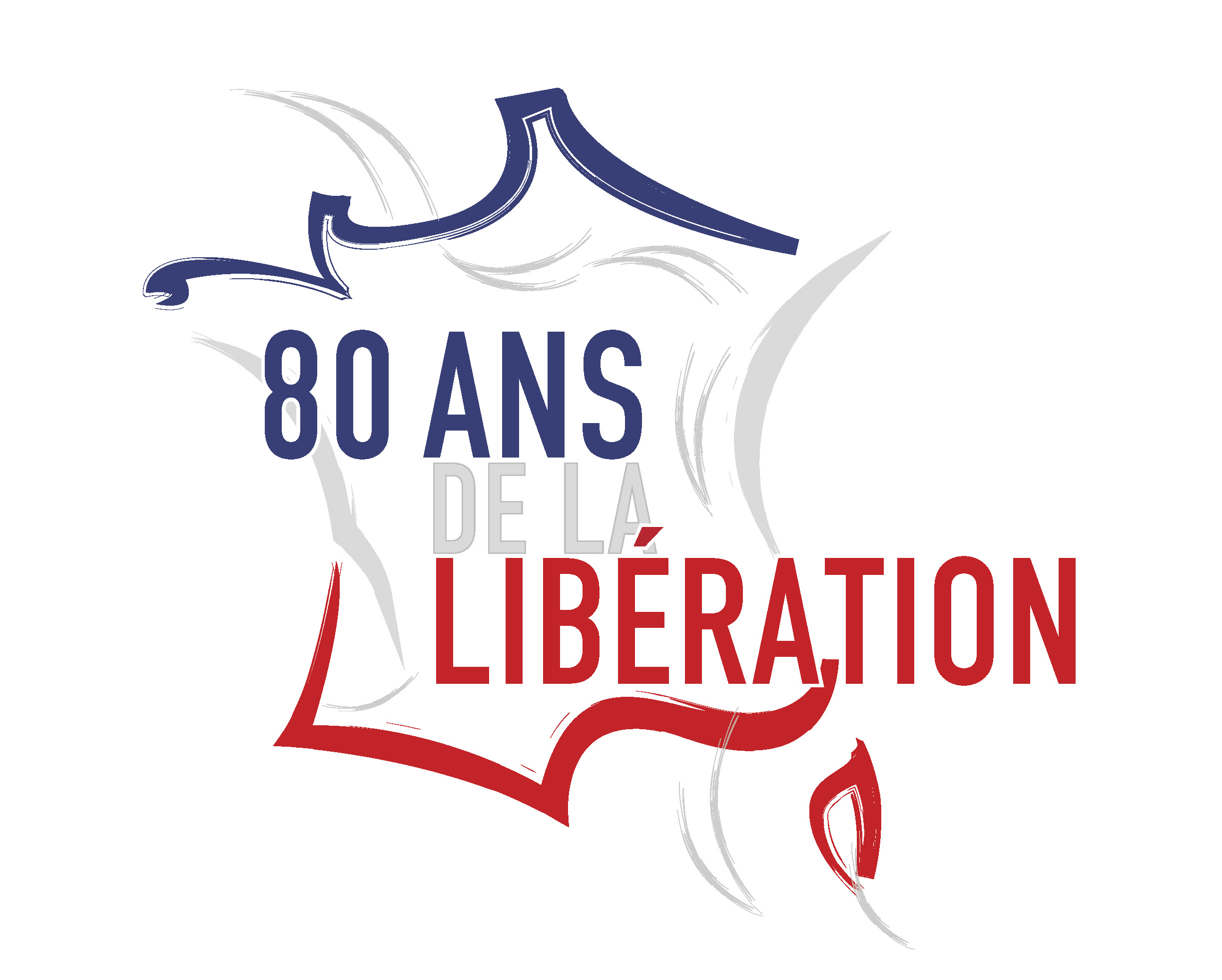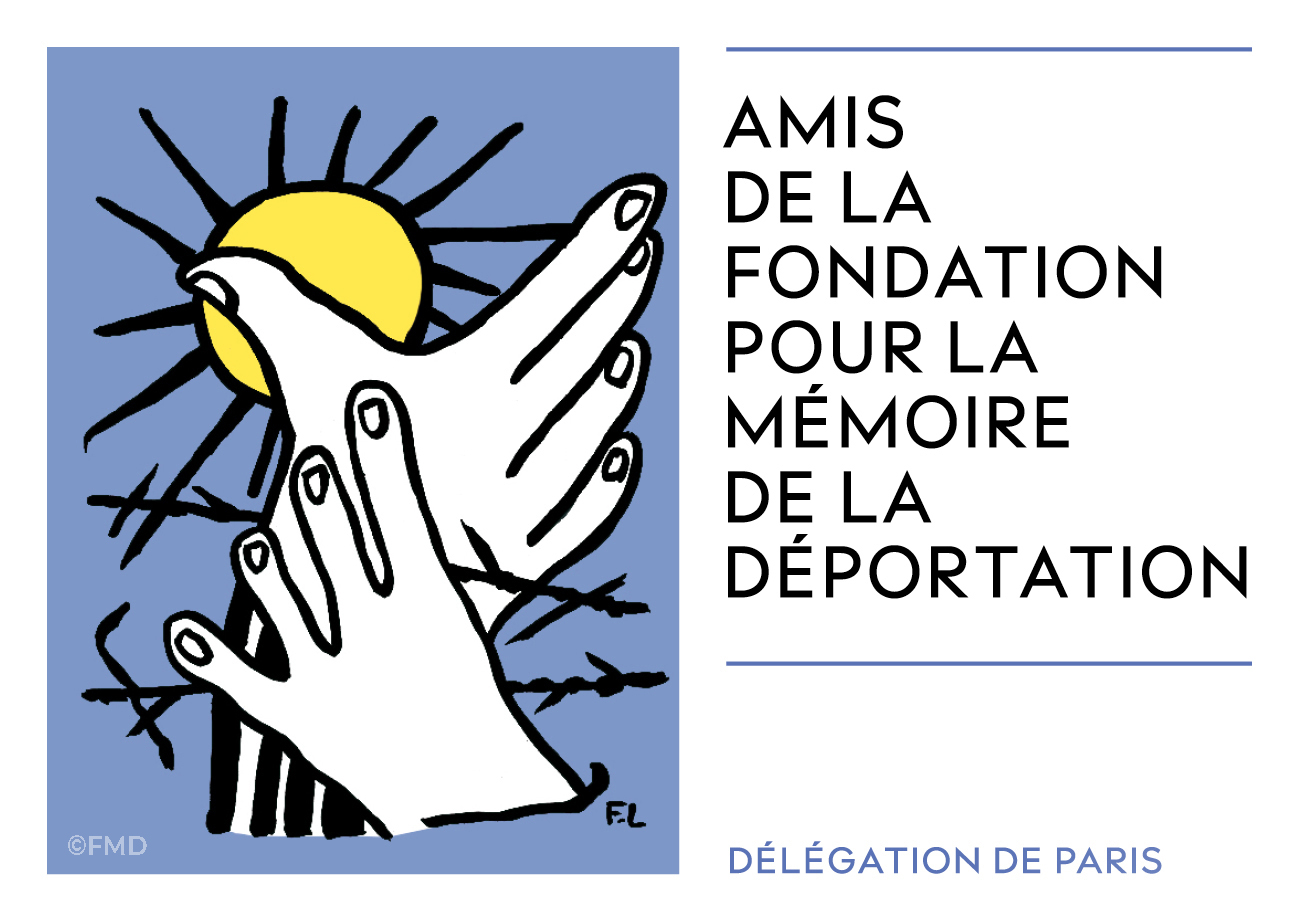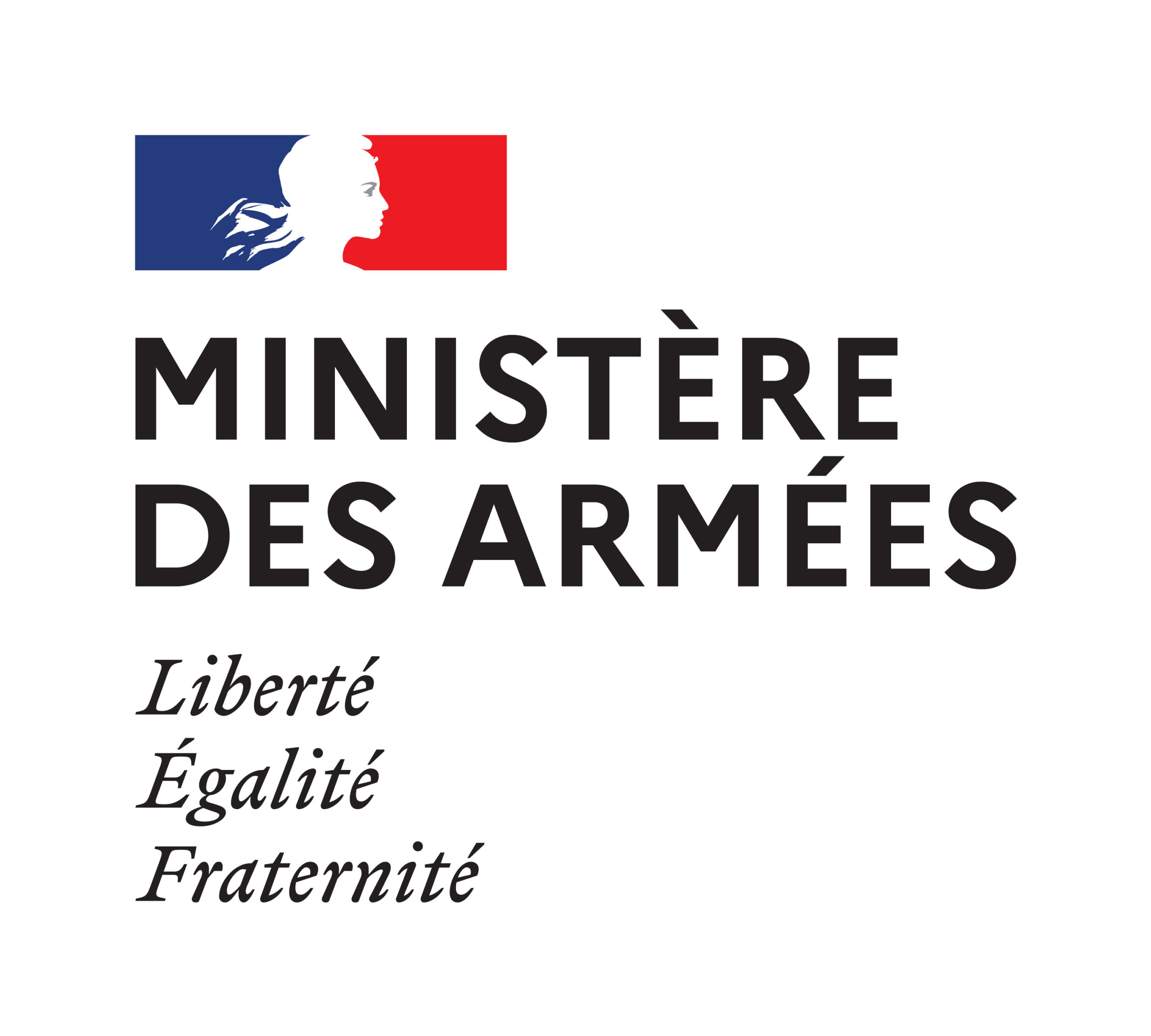RAVENSBRÜCK
Opening : may 1939
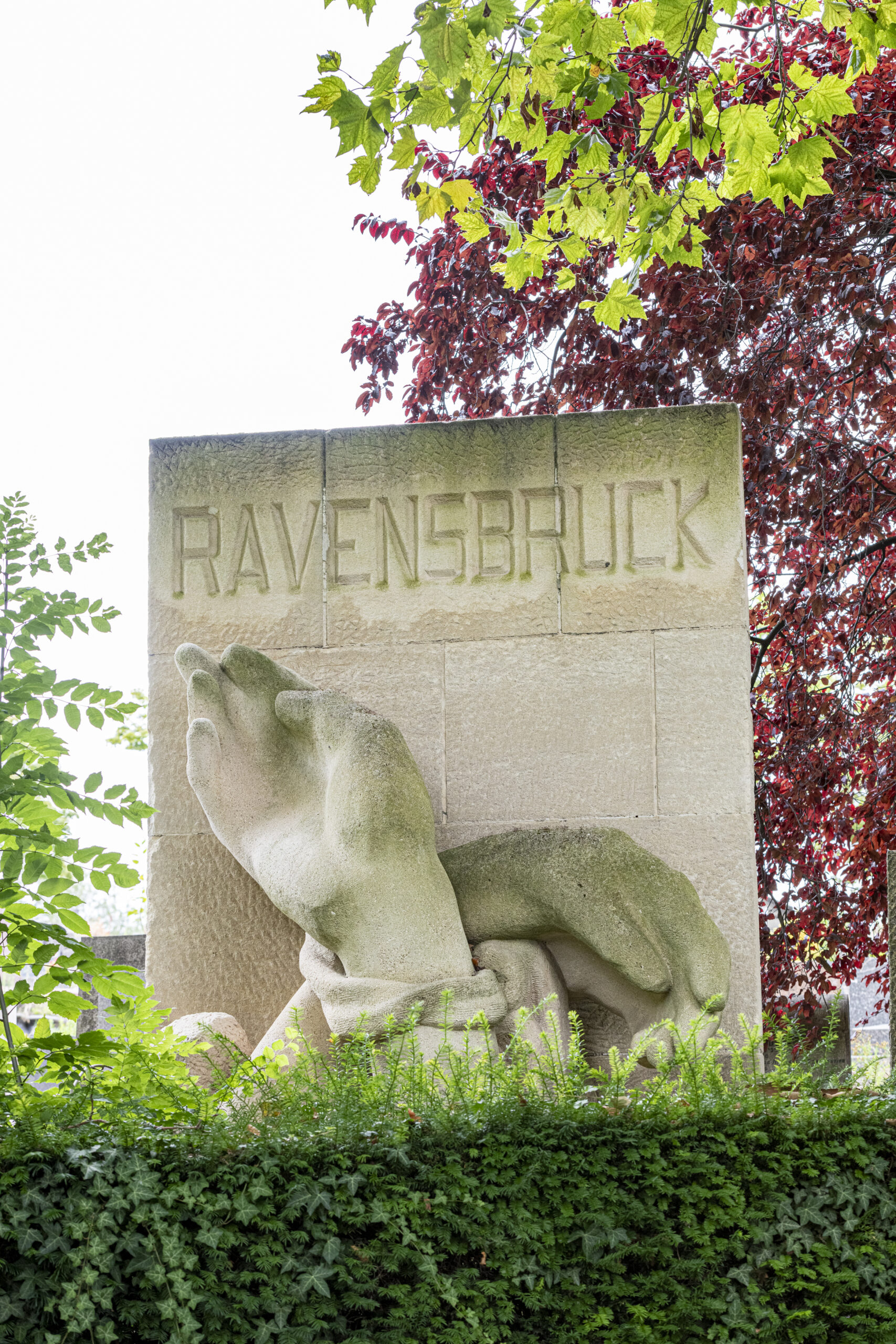
© Vincent Gerbet
Monument description
This monument was inaugurated on 23 April 1955.
Carved by Emile Morlaix in granite, two huge forearms emerge from a rocky chaos in front of a wall with perfectly cut blocks. The whole reflects the brutality and oppression both organized and arbitrary of the world concentration. The wrists are tied in a sign of servitude. One hand, falling to the ground, evokes weakness and death. The other, palm facing towards the sky, erect, recalls the permanence of hope and the quest for freedom.
Engraved on one of the base stones:
Here lie the ashes of women deported
martyrs of Nazi barbarity
1939-1945
At the back of the monument, a plaque:
April 29, 1951
The deportees from Ravensbrück have deposited here the ashes
of their comrades murdered in this camp.
Remember them.”
Ravensbrück camp
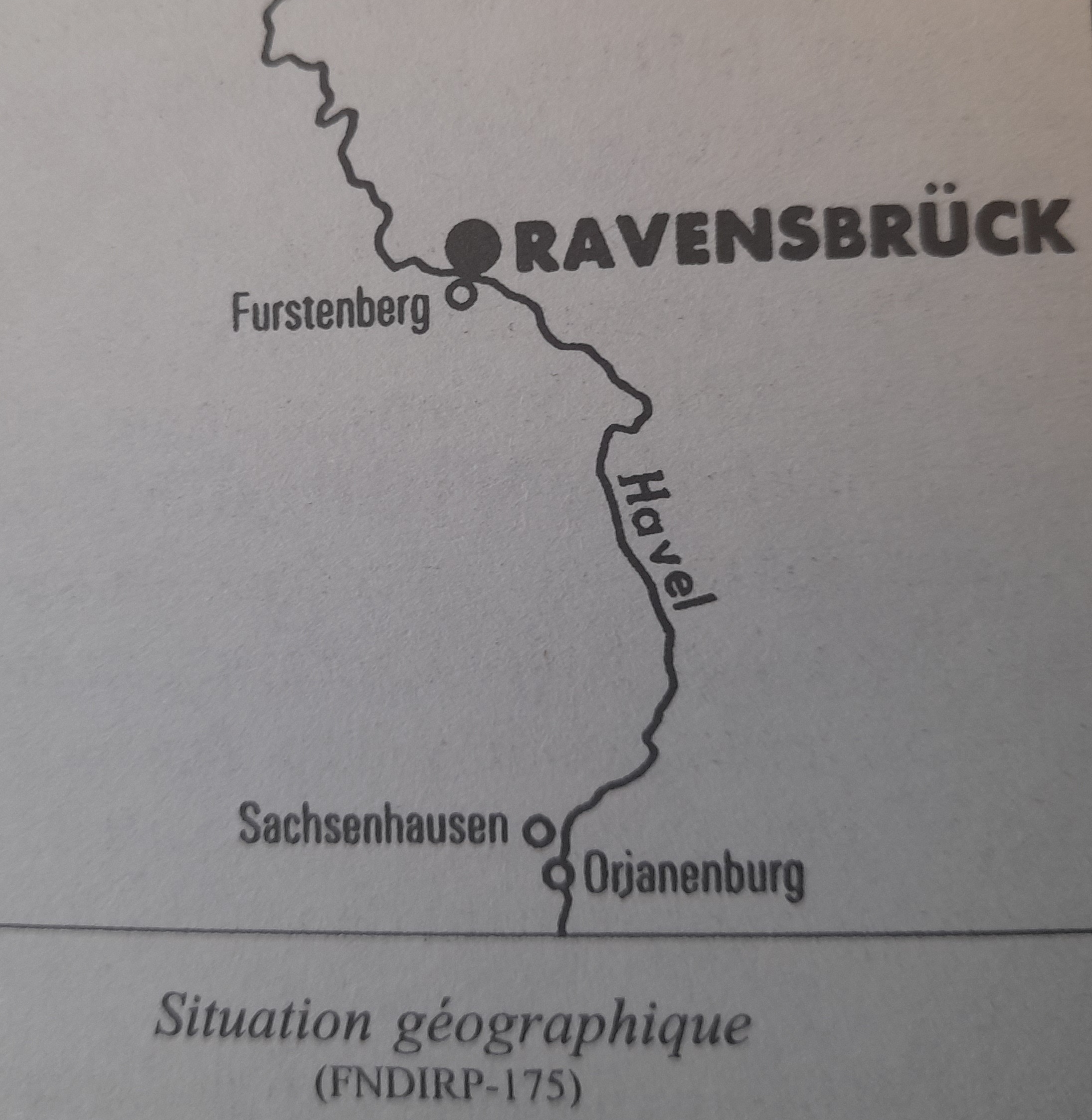
At the end of 1938, 500 men from the Sachsenhausen camp were transferred to the village of Ravensbrück, 80 km north of Berlin, to build what would become the largest women’s concentration camp and the second largest in the Reich after Auschwitz-Birkenau.
Opened in May 1939, the Nazis imprisoned the German resistance fighters and then those of conquered countries.
The commander’s villa is located in front of the camp with a view of the lake. Four houses are reserved for senior officers, ten for non-commissioned officers and eight for guards.
The headquarters of the SS management and administration is the Kommandantur. The ground floor houses the «political section» of the Gestapo, the censorship offices and the «doctors’ section of the camp». On the first floor are the offices of the commander, the secretariat, administration and labour department.
The commanders will be 3: SS Colonel Günther Tamaschke from December 1938 to April 1939, SS Captain Mac Keogel until 20 August 1942, then SS Captain Fritz Suhren until the end of April 1945.
The supervision of the inmates is carried out by SS women, the Aufseherinnen. Each block is controlled by a blockowa, former deportee of common law assisted by two stubowa.
The police of the camp is entrusted to kapos organized in sections of Lagerpolizei and wearing a red armband.
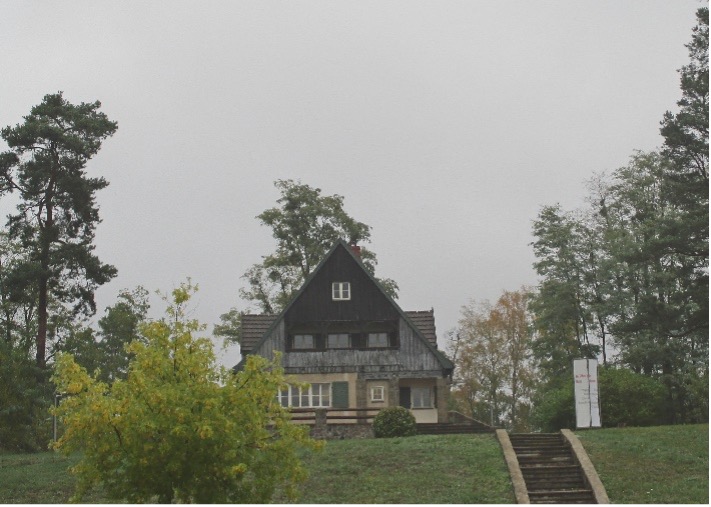
The Commander’s Villa
© AFMD 75
In the spring of 1941, a small men’s camp was added, isolated from that for women. The inmates are used as labour for the ongoing expansion of the camp.
In August 1944, a tent was erected between blocks 24 and 26 to manage overcrowding: more than 4,000 prisoners were crammed into it. In January 1945, this overpopulation, coupled with poor hygiene, led to a typhus epidemic.
During the first years, the bodies of the deceased are cremated in the communal crematorium of the town of Fürstenberg, near the camp. In the spring of 1943, the SS built a crematorium, enlarged in 1944. At the end of 1944, they added a gas chamber. The systematic extermination of the sick and elderly begins. The patients (of tuberculosis, diphtheria, typhus, scabies…) are gathered in blocks 8 to 10. In the morning, they will be selected for the gas chamber or medical experiments.
132,000 women and children and 20,000 men from 30 countries were registered in Ravensbrück, the majority of whom are Polish (36%) and Slavic (21%), while French women represent 6%.
70,000 perish in it.
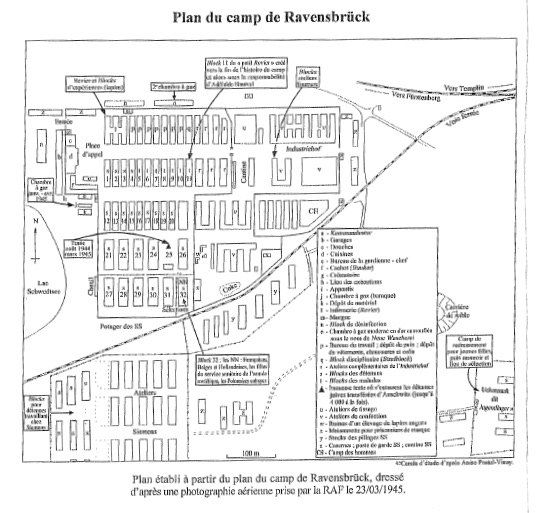
The inmates
– 70,000 political opponents wearing the red triangle (including in August 1944, from the Auschwitz camp, the French survivors deported from France on 24 January 1943 – first convoy of women from France and the only convoy of resisters for Auschwitz, known as the “31,000” convoy; cf camp Auschwitz-Birkenau)
-20,000 Jewish women in the yellow triangle.
The majority of them arrived at the end of 1944 before the advance of the Allies and the evacuation of other camps including that of Auschwitz.
– 2,800 Gypsy and Sinti women and children, of whom 1,000 were transferred from Auschwitz.
– gay women, wearing the pink triangle.
Many died in indifference, rejected by their families.
– Jehovah’s Witnesses women in the purple triangle
– 5,500 “Asocials” bearing the black triangle.
These women are homeless, alcoholics or prostitutes and are present at the opening of the camp. In exchange for their survival, the SS often forced them to be prostitutes in the camp.
– French and British radio operators called « les Merlinettes ».
To fill the shortage of male personnel, General Merlin, then commander of transmissions in North Africa, created in November 1942 the Female Corps of Transmissions (CFT)
– 900 children, aged between two and sixteen, evacuated from other camps.
From the age of 12, they are forced to work while younger children wander around in barracks.
During the first years, pregnant women are forced to abort even at the end of pregnancy. In case of childbirth, the newborn is killed immediately. However, in September 1944, a special barracks for newborns is created: the Kinderzimmer (children’s room), in block 11, room with two wooden boards on two floors. Up to 10 infants were lying across each bed.
Out of 522 births, 31 children survived, including 3 French.
Regular “selections” isolated those who were injured, sick or too weak to work.
At first, these prisoners were shot on the spot. In the spring of 1942, as part of Operation 14f13, 1,600 women and 300 men were transferred to the Bernberg sanatorium, where a gas chamber was built that served as a killing centre for disabled people. From 1942 to the end of 1944, 6 convoys from Ravensbrück, carrying between 60 and 1000 prisoners, were sent to death centres, notably the one in Hartheim, near Linz, Austria. In Ravensbrück, the SS staff use the infirmary to kill prisoners by injection. Others were sent to the Birkenau killing centre.
In early 1945, the SS built a gas chamber near the crematorium of Ravensbrück.
More than 5,000 people were killed there before the arrival of Soviet troops in April 1945.
From the summer of 1942, medical experiments were conducted, first on 75 Polish women aged 15 to 25 years old, from whom Nazi doctors took bone and muscle from the legs and inoculated various bacilli on open wounds to test the effectiveness of sulfamides. The survivors, hopping, will be called “rabbits”. In early January 1945, Doctors Treite and Schumann began the live sterilization of at least 120 young Gypsies, Roma or Sinti. Youngest are 8 years old. No survivors.
The camp provides labour for a multitude of German enterprises (remediation of swamps, construction of roads, armaments industries), in particular Siemens which from 1942, built twenty production halls at the edge of the camp. Women make components for submarines. Up to 2,400 women were exploited by Siemens, which will not be bothered after the war.
In the sewing workshop of the camp, the inmates sew clothes for the deportees and for the SS. The site is expanding to include fur weaving and processing workshops.
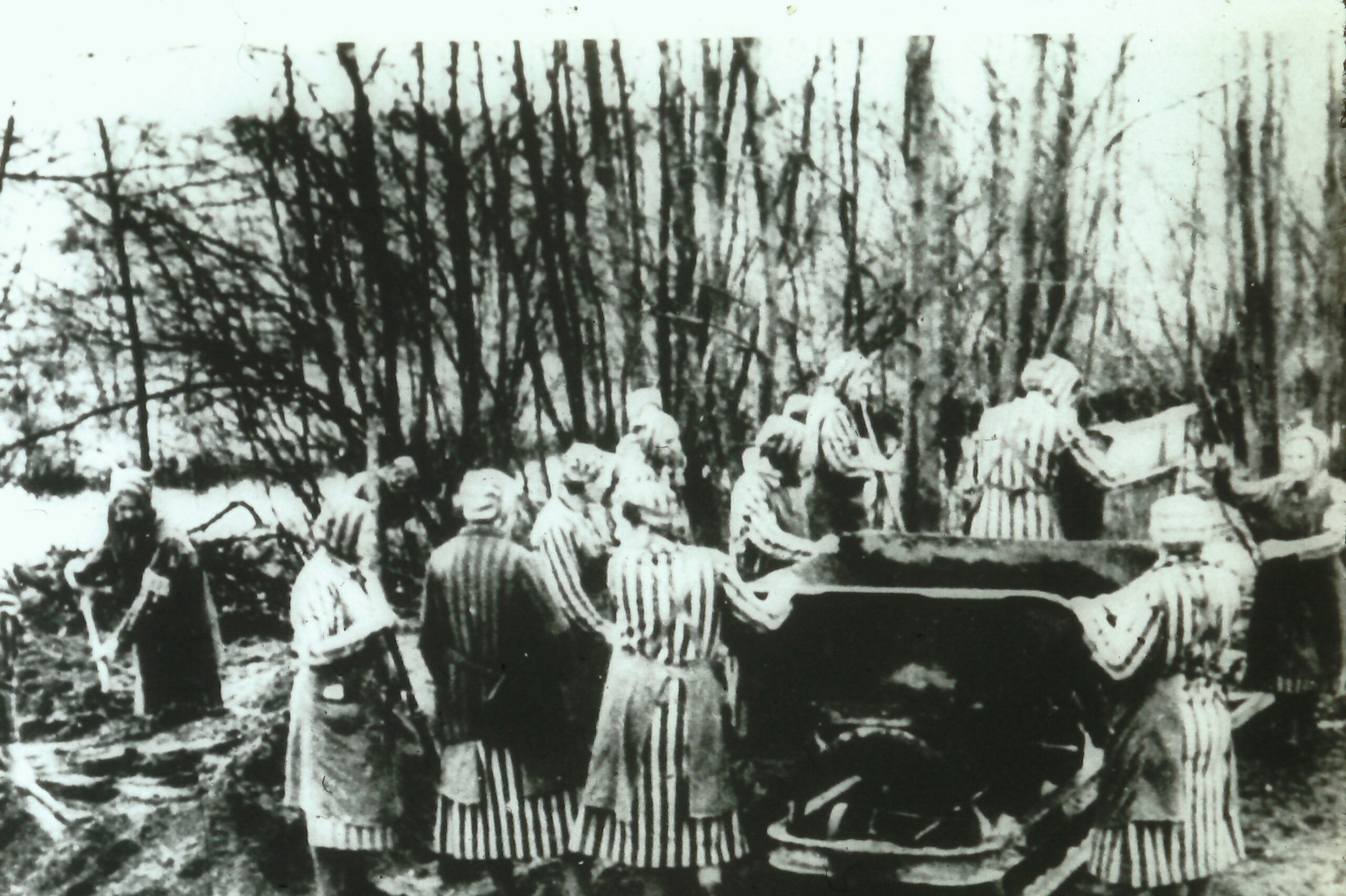
Earthworks © DR
42 external kommandos, some of them with more than 10,000 deportees, provide a large workforce for the German army or companies, such as those in Beendorf near Helmstedt (salt mines), Abteroda, also dependent on Buchenwald where Jewish women manufacture explosives, Genshagen for Daimler-Benz, Hennigsdorf for AEG, and others like Zwodau for Siemens and Holleichen for Skoda which will depend on Flossenbürg.
Uckermark
In the spring of 1942, is built 1.5 km from the camp, that of Uckermark, «camp for the protection of young people»: 6 then 17 huts intended for young German girls classified as «asociales». Dancing, drinking, befriending Jewish people, refusing to join the “Bund deutscher Mädchen” are grounds for internment as “sex offenders”.
Between 1,000 and 1,200 young women, aged 16 to 21, will be detained there.
From 1944, those who, after being selected by the SS, no longer «serve» companies were transferred from Ravensbrück. The majority of these women are gassed in trucks before reaching Uckermark.
The evacuation of the camp and its release
In the spring of 1945, as the Red Army drew closer, the SS began to evacuate its archives and machines from the workshops. At the same time, evacuations begin to other camps, including the Mauthausen camp in Austria for 2,000 women. Those who are unable to walk are killed.
The International Red Cross is talking about taking prisoners to neutral countries like Sweden and Switzerland. On 5 April, 299 French women and a Polish woman were allowed to leave the camp under her escort.
The camp was liberated by the Soviet army on 30 April 1945, when almost all the inmates were evacuated. 2,000 sick women remain.
Extract from the testimony of Marie-Claude Vaillant-Couturier at the Nuremberg trial, Monday, January 28, 1946, morning hearing:
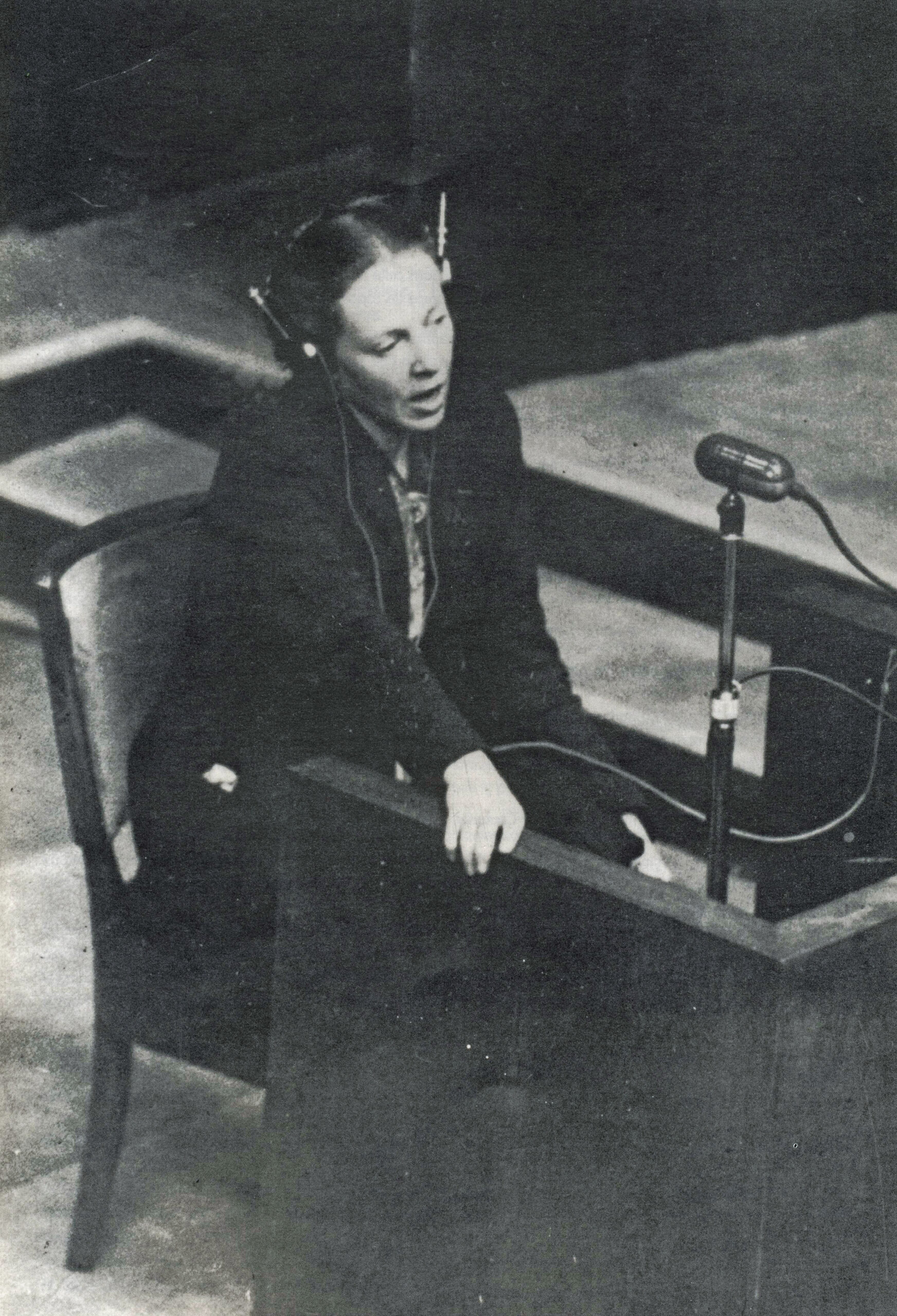
National Archives, College Park, MD, USA
When the Germans left, they left 2,000 sick women and a number of volunteers, including myself, to treat them; they left us without water and light; fortunately, the Russians arrived the next day. So we were able to go up to the men’s camp and there we found an indescribable spectacle; they had been without water for five days. There were 800 seriously ill people, three doctors and seven nurses who could not get the dead out of the sick. We were able, thanks to the Red Army, to transport these patients in clean blocks and give them care and food but unfortunately I can only give the figure for the French: there were 400 when we found the camp and only 150 were able to return to France; for the others, it was too late, despite the care… »
The interior of the camp remains, from May 1945 to January 1994, a military area used by the Soviet Army and then the forces of the Commonwealth of Independent States.
From December 1946 to July 1948, seven trials were held in Hamburg under British jurisdiction to try the camp’s leaders. In total, 38 accused were tried, including 21 women.
The will of the women of Ravensbrück
The so-called “Neubrandenbourg Manifesto” was written as a testament for posterity by a group of political prisoners of various nationalities in the spring of 1944 in Neubrandenbourg, one of the kommandos of Ravensbrück:
« We express the wish that our children may consider the free existence of human beings as a supreme value, that the right to life, the right to personal dignity and the right to freedom may never again be violated. In the coexistence of peoples, social equality and justice must replace all aspirations for domination.”
At the entrance to the camp, a poem by Anna Seghers, German writer:
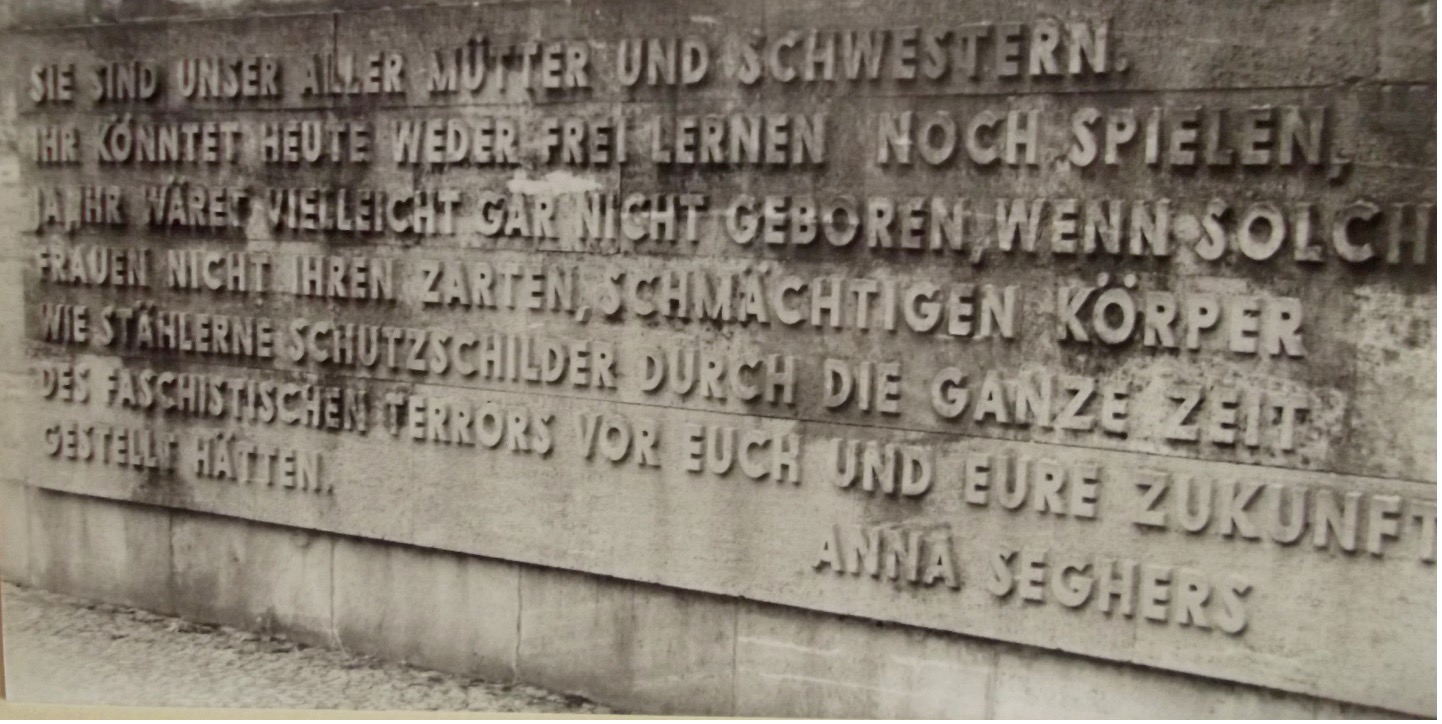
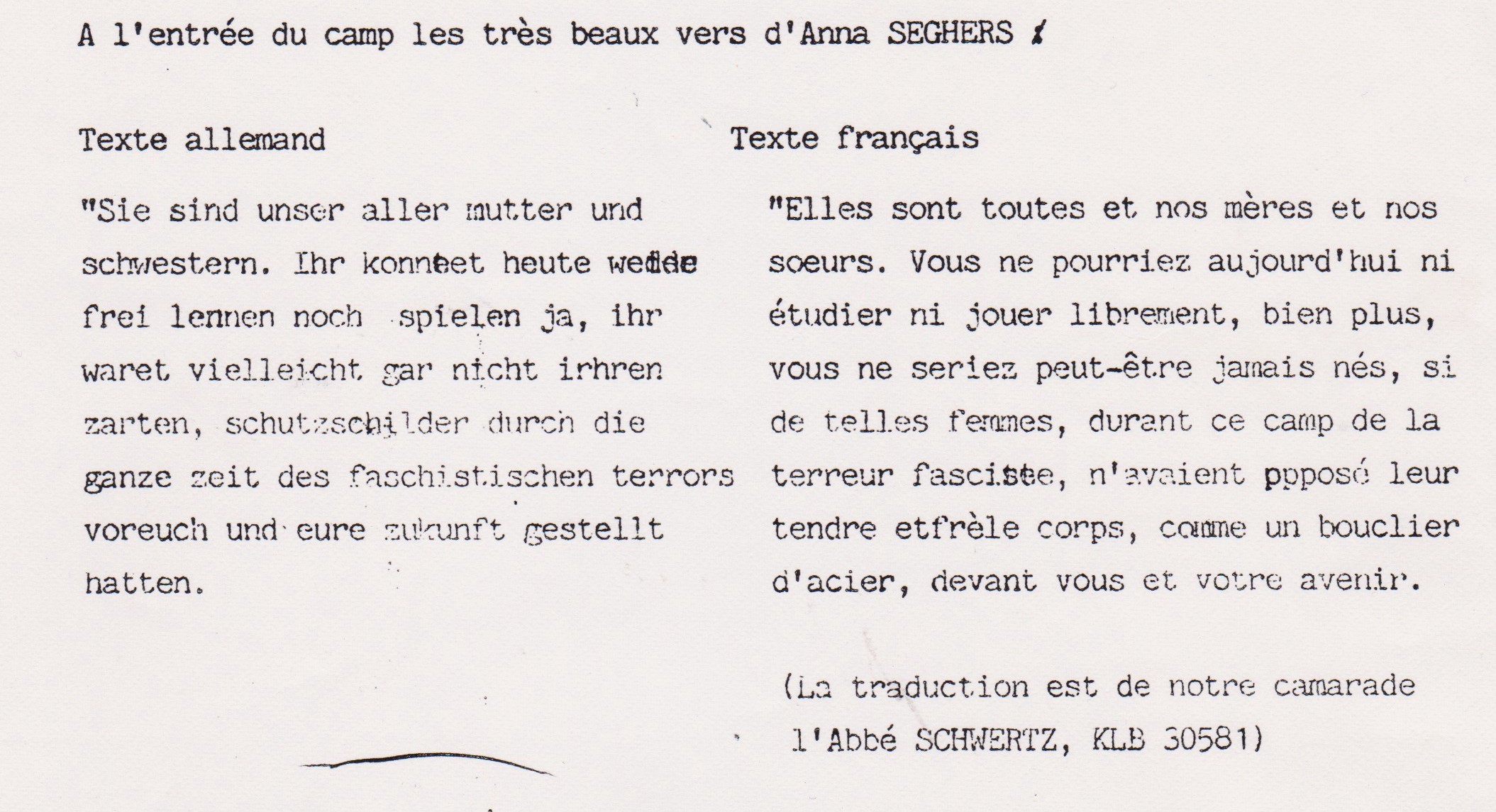

National Memorial of Ravensbrück (Germany): sculptures by Will Lammert
The rose Resurrection, symbol of peace and remembrance
From 1945, the survivors wish to celebrate the peace that has been restored and pay tribute to their fallen comrades in Ravensbrück. They imagine a rose that could become the symbol of this peace and memory. Since 1975 (30th anniversary of the liberation of the camps), the rose has sown hope in all corners of Europe, at the foot of monuments and in remembrance spaces.

≪ Je suis Résurrection
Et tout au long des ans
Tout au long des saisons
Je resterai le témoin de vie
Qui protègera de la barbarie
Tous les enfants du monde ≫
Sources
– Amicale de Ravensbrück et Association des Déportées et Internées de la Résistance, Les Françaises à Ravensbrück, Paris, Gallimard, 1965
– Amicale de Ravensbrück et des commandos dépendants, Revivre et construire demain, Paris, 1994
– Chombart de Lauwe, Marie-José, Toute une vie de résistance, éd. Graphein/FNDIRP, 1998
– Fondation pour la Mémoire de la Déportation, « Mémoire Vivante », n°97 : Ravensbrück.
– Tillion Germaine, Ravensbrück, éd. du Seuil, 1973
– Internationales Ravensbrück Komitee : https://irk-cir.org
– Mémorial de Ravensbrück, Allemagne : https://www.ravensbrueck-sbg.de/en/
– https://encyclopedia.ushmm.org/content/fr/article/ravensbrueck
Ravensbrück
Opening : may 1939

© Vincent Gerbet
Monument description
This monument was inaugurated on 23 April 1955.
Carved by Emile Morlaix in granite, two huge forearms emerge from a rocky chaos in front of a wall with perfectly cut blocks. The whole reflects the brutality and oppression both organized and arbitrary of the world concentration. The wrists are tied in a sign of servitude. One hand, falling to the ground, evokes weakness and death. The other, palm facing towards the sky, erect, recalls the permanence of hope and the quest for freedom.
Engraved on one of the base stones:
Here lie the ashes of women deported
martyrs of Nazi barbarity
1939-1945
At the back of the monument, a plaque:
April 29, 1951
The deportees from Ravensbrück have deposited here the ashes
of their comrades murdered in this camp.
Remember them.”
Ravensbrück camp

At the end of 1938, 500 men from the Sachsenhausen camp were transferred to the village of Ravensbrück, 80 km north of Berlin, to build what would become the largest women’s concentration camp and the second largest in the Reich after Auschwitz-Birkenau.
Opened in May 1939, the Nazis imprisoned the German resistance fighters and then those of conquered countries.
The commander’s villa is located in front of the camp with a view of the lake. Four houses are reserved for senior officers, ten for non-commissioned officers and eight for guards.
The headquarters of the SS management and administration is the Kommandantur. The ground floor houses the «political section» of the Gestapo, the censorship offices and the «doctors’ section of the camp». On the first floor are the offices of the commander, the secretariat, administration and labour department.
The commanders will be 3: SS Colonel Günther Tamaschke from December 1938 to April 1939, SS Captain Mac Keogel until 20 August 1942, then SS Captain Fritz Suhren until the end of April 1945.
The supervision of the inmates is carried out by SS women, the Aufseherinnen. Each block is controlled by a blockowa, former deportee of common law assisted by two stubowa.
The police of the camp is entrusted to kapos organized in sections of Lagerpolizei and wearing a red armband.

The Commander’s Villa
© AFMD 75
In the spring of 1941, a small men’s camp was added, isolated from that for women. The inmates are used as labour for the ongoing expansion of the camp.
In August 1944, a tent was erected between blocks 24 and 26 to manage overcrowding: more than 4,000 prisoners were crammed into it. In January 1945, this overpopulation, coupled with poor hygiene, led to a typhus epidemic.
During the first years, the bodies of the deceased are cremated in the communal crematorium of the town of Fürstenberg, near the camp. In the spring of 1943, the SS built a crematorium, enlarged in 1944. At the end of 1944, they added a gas chamber. The systematic extermination of the sick and elderly begins. The patients (of tuberculosis, diphtheria, typhus, scabies…) are gathered in blocks 8 to 10. In the morning, they will be selected for the gas chamber or medical experiments.
132,000 women and children and 20,000 men from 30 countries were registered in Ravensbrück, the majority of whom are Polish (36%) and Slavic (21%), while French women represent 6%.
70,000 perish in it.

The inmates
– 70,000 political opponents wearing the red triangle (including in August 1944, from the Auschwitz camp, the French survivors deported from France on 24 January 1943 – first convoy of women from France and the only convoy of resisters for Auschwitz, known as the “31,000” convoy; cf camp Auschwitz-Birkenau)
-20,000 Jewish women in the yellow triangle.
The majority of them arrived at the end of 1944 before the advance of the Allies and the evacuation of other camps including that of Auschwitz.
– 2,800 Gypsy and Sinti women and children, of whom 1,000 were transferred from Auschwitz.
– gay women, wearing the pink triangle.
Many died in indifference, rejected by their families.
– Jehovah’s Witnesses women in the purple triangle
– 5,500 “Asocials” bearing the black triangle.
These women are homeless, alcoholics or prostitutes and are present at the opening of the camp. In exchange for their survival, the SS often forced them to be prostitutes in the camp.
– French and British radio operators called « les Merlinettes ».
To fill the shortage of male personnel, General Merlin, then commander of transmissions in North Africa, created in November 1942 the Female Corps of Transmissions (CFT)
– 900 children, aged between two and sixteen, evacuated from other camps.
From the age of 12, they are forced to work while younger children wander around in barracks.
During the first years, pregnant women are forced to abort even at the end of pregnancy. In case of childbirth, the newborn is killed immediately. However, in September 1944, a special barracks for newborns is created: the Kinderzimmer (children’s room), in block 11, room with two wooden boards on two floors. Up to 10 infants were lying across each bed.
Out of 522 births, 31 children survived, including 3 French.
Regular “selections” isolated those who were injured, sick or too weak to work.
At first, these prisoners were shot on the spot. In the spring of 1942, as part of Operation 14f13, 1,600 women and 300 men were transferred to the Bernberg sanatorium, where a gas chamber was built that served as a killing centre for disabled people. From 1942 to the end of 1944, 6 convoys from Ravensbrück, carrying between 60 and 1000 prisoners, were sent to death centres, notably the one in Hartheim, near Linz, Austria. In Ravensbrück, the SS staff use the infirmary to kill prisoners by injection. Others were sent to the Birkenau killing centre.
In early 1945, the SS built a gas chamber near the crematorium of Ravensbrück.
More than 5,000 people were killed there before the arrival of Soviet troops in April 1945.
From the summer of 1942, medical experiments were conducted, first on 75 Polish women aged 15 to 25 years old, from whom Nazi doctors took bone and muscle from the legs and inoculated various bacilli on open wounds to test the effectiveness of sulfamides. The survivors, hopping, will be called “rabbits”. In early January 1945, Doctors Treite and Schumann began the live sterilization of at least 120 young Gypsies, Roma or Sinti. Youngest are 8 years old. No survivors.
The camp provides labour for a multitude of German enterprises (remediation of swamps, construction of roads, armaments industries), in particular Siemens which from 1942, built twenty production halls at the edge of the camp. Women make components for submarines. Up to 2,400 women were exploited by Siemens, which will not be bothered after the war.
In the sewing workshop of the camp, the inmates sew clothes for the deportees and for the SS. The site is expanding to include fur weaving and processing workshops

Earthworks
© DR
42 external kommandos, some of them with more than 10,000 deportees, provide a large workforce for the German army or companies, such as those in Beendorf near Helmstedt (salt mines), Abteroda, also dependent on Buchenwald where Jewish women manufacture explosives, Genshagen for Daimler-Benz, Hennigsdorf for AEG, and others like Zwodau for Siemens and Holleichen for Skoda which will depend on Flossenbürg.
Uckermark
In the spring of 1942, is built 1.5 km from the camp, that of Uckermark, «camp for the protection of young people»: 6 then 17 huts intended for young German girls classified as «asociales». Dancing, drinking, befriending Jewish people, refusing to join the “Bund deutscher Mädchen” are grounds for internment as “sex offenders”.
Between 1,000 and 1,200 young women, aged 16 to 21, will be detained there.
From 1944, those who, after being selected by the SS, no longer «serve» companies were transferred from Ravensbrück. The majority of these women are gassed in trucks before reaching Uckermark.
The evacuation of the camp and its release
In the spring of 1945, as the Red Army drew closer, the SS began to evacuate its archives and machines from the workshops. At the same time, evacuations begin to other camps, including the Mauthausen camp in Austria for 2,000 women. Those who are unable to walk are killed.
The International Red Cross is talking about taking prisoners to neutral countries like Sweden and Switzerland. On 5 April, 299 French women and a Polish woman were allowed to leave the camp under her escort.
The camp was liberated by the Soviet army on 30 April 1945, when almost all the inmates were evacuated. 2,000 sick women remain.
Extract from the testimony of Marie-Claude Vaillant-Couturier at the Nuremberg trial, Monday, January 28, 1946, morning hearing:

National Archives, College Park, MD, USA
When the Germans left, they left 2,000 sick women and a number of volunteers, including myself, to treat them; they left us without water and light; fortunately, the Russians arrived the next day. So we were able to go up to the men’s camp and there we found an indescribable spectacle; they had been without water for five days. There were 800 seriously ill people, three doctors and seven nurses who could not get the dead out of the sick. We were able, thanks to the Red Army, to transport these patients in clean blocks and give them care and food but unfortunately I can only give the figure for the French: there were 400 when we found the camp and only 150 were able to return to France; for the others, it was too late, despite the care… »
The interior of the camp remains, from May 1945 to January 1994, a military area used by the Soviet Army and then the forces of the Commonwealth of Independent States.
From December 1946 to July 1948, seven trials were held in Hamburg under British jurisdiction to try the camp’s leaders. In total, 38 accused were tried, including 21 women.
The will of the women of Ravensbrück
The so-called “Neubrandenbourg Manifesto” was written as a testament for posterity by a group of political prisoners of various nationalities in the spring of 1944 in Neubrandenbourg, one of the kommandos of Ravensbrück:
« We express the wish that our children may consider the free existence of human beings as a supreme value, that the right to life, the right to personal dignity and the right to freedom may never again be violated. In the coexistence of peoples, social equality and justice must replace all aspirations for domination.”
At the entrance to the camp, a poem by Anna Seghers, German writer:



National Memorial of Ravensbrück (Germany): sculptures by Will Lammert
The rose Resurrection, symbol of peace and remembrance
From 1945, the survivors wish to celebrate the peace that has been restored and pay tribute to their fallen comrades in Ravensbrück. They imagine a rose that could become the symbol of this peace and memory. Since 1975 (30th anniversary of the liberation of the camps), the rose has sown hope in all corners of Europe, at the foot of monuments and in remembrance spaces.

≪ Je suis Résurrection
Et tout au long des ans
Tout au long des saisons
Je resterai le témoin de vie
Qui protègera de la barbarie
Tous les enfants du monde ≫
Sources
– Amicale de Ravensbrück et Association des Déportées et Internées de la Résistance, Les Françaises à Ravensbrück, Paris, Gallimard, 1965
– Amicale de Ravensbrück et des commandos dépendants, Revivre et construire demain, Paris, 1994
– Chombart de Lauwe, Marie-José, Toute une vie de résistance, éd. Graphein/FNDIRP, 1998
– Fondation pour la Mémoire de la Déportation, « Mémoire Vivante », n°97 : Ravensbrück.
– Tillion Germaine, Ravensbrück, éd. du Seuil, 1973
– Internationales Ravensbrück Komitee : https://irk-cir.org
– Mémorial de Ravensbrück, Allemagne : https://www.ravensbrueck-sbg.de/en/
– https://encyclopedia.ushmm.org/content/fr/article/ravensbrueck
Délégation de Paris des Amis de la Fondation
pour la Mémoire de la Déportation
31 Boulevard Saint-Germain 75005 Paris
Contact : afmd.dt75@gmail.com
©AFMD75

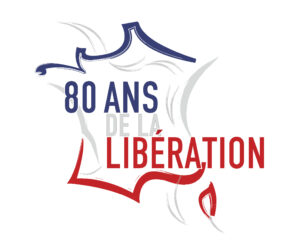

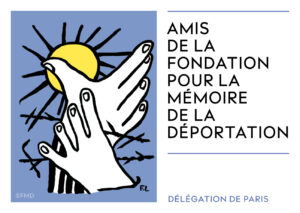
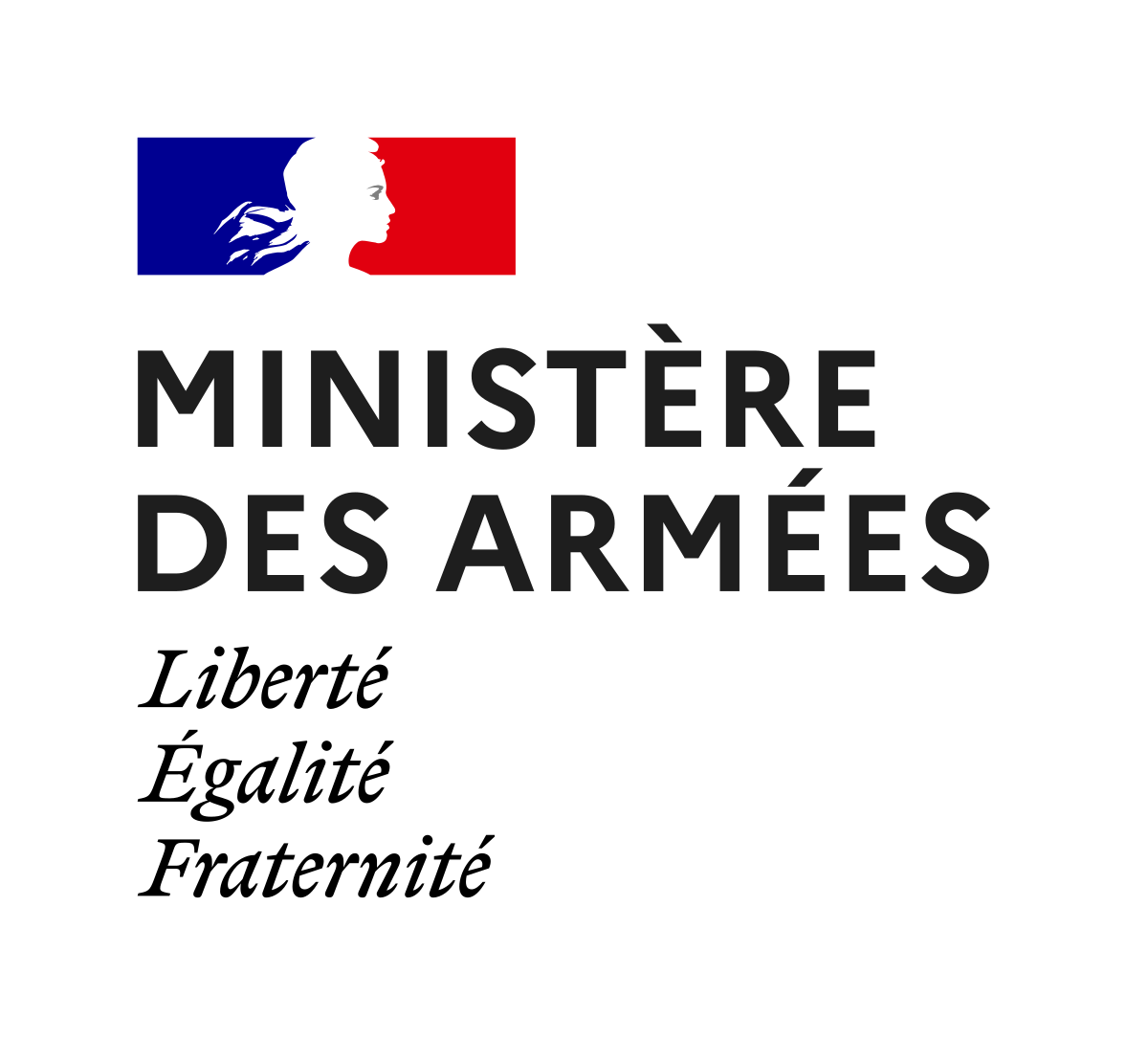
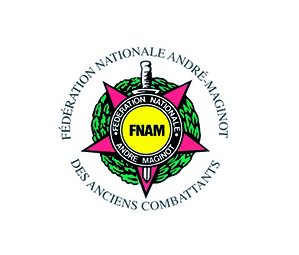
Délégation de Paris
des Amis de la Fondation
pour la Mémoire de la Déportation
31 Boulevard Saint-Germain
75005 Paris
Contact :
afmd75@gmail.com
©AFMD75
Délégation de Paris
des Amis de la Fondation
pour la Mémoire
de la Déportation
31 Boulevard Saint-Germain
75005 Paris
Contact
afmd75@gmail.com
©AFMD75

